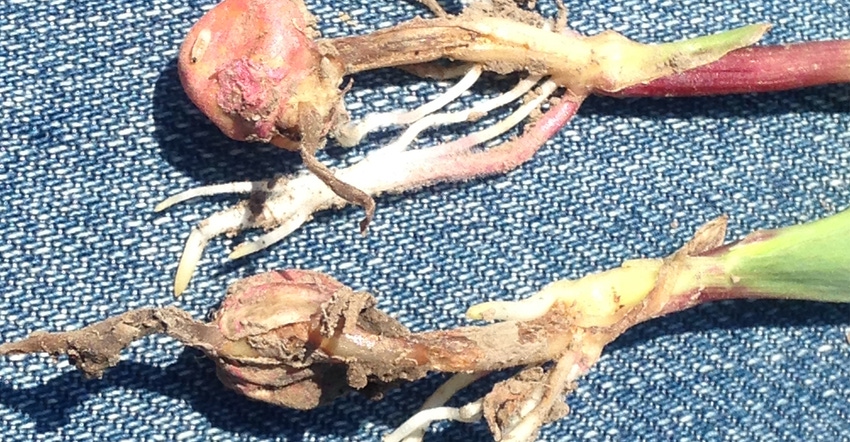May 17, 2022

Most Iowa farmers have had a delayed planting season due to Mother Nature. Rain, below-normal temperatures, and other weather conditions prevented planting in April and the first part of May.
Agronomists say there are several factors to consider when corn is planted later than usual. Any seed that did go in early in Iowa, could be susceptible to disease due to the cold, wet seedbed.
Mike Witt, Iowa State Extension field agronomist, says cold, wet soils become a perfect place for seedling diseases to appear in seeds which have been setting there and not growing. “Some seedlings will take in cold water when the conditions are like they have been for the past several weeks. That causes poor germination,” Witt says. “Also, when there’s not enough heat in the seedbed, we can see grubs eating at seedlings, as well as seedling rot.” Scouting earlier-planted fields is important to determine the quality of the seedlings and then make necessary management decisions.
Alan Bass, LG Seeds agronomist in Wisconsin, says a corn crop which starts strong will have less chance of early-season pest and disease pressure.
Seed treatments provide a layer of protection from diseases that weaken plants and make them more susceptible to insect pressure. Bass says this type of protection will likely improve stands and reduce yield loss, which could be critical this year given high prices for seed, fertilizer, fuel and other inputs. Farmers who got the right seed with the right seed treatments will improve their odds of success this year.
Planting conditions
Witt says farmers may need to change corn hybrids to get a shorter maturity due to later planting. “In the beginning of May, farmers are probably OK with the hybrid they were planning to use; but if corn gets into the end of May or later, then it’s important to look at a shorter maturing corn hybrid,” Witt says. “Soybeans will still be OK for a while, but obviously both need to get in the ground to maximize the yield potential.”
Having the right planter settings will help in marginal planting conditions, making sure there is less down pressure and that row cleaners are at the correct height. Those tough conditions also make it harder to spray — and kill — cover crops.
After emergence
Bass says scouting is a must once emergence has occurred to look for irregularities and determine whether the cause is disease or pests. The seed treatments should help narrow down what the problem could be.
“Dig down to the seed, and focus on that zone around the seed and how it’s taken care of,” Bass says. “Look for damage to the kernel, whether it be chewing or rotting. Look in the seed trench.”
Once the corn plant emerges, it can be easier to identify the problem by observing the leaves, leaf margins and roots. Witt says the growth curve of corn will be different once heat units are present. Corn will grow faster with warmer soils and air.
If the soil surface continues to be wet after planting, roots may grow sideways instead of down, which can lead to problems with stalk strength. Roots generally develop where there is moisture, so with moisture down in the soils, plants should be OK. Witt doesn’t expect a lot of disease pressure this spring in most parts of Iowa, especially those that had drought conditions last year.
“A wet spring following a drought year might actually help with disease and pest pressure,” Witt says.
Bass agrees that pest pressures vary from year to year and region to region, which is why it is good to use preventives when possible.
“Most pests can be controlled pretty easily and cost-effectively with seed treatments, versus treating over the top with an insecticide,” Bass says.
The help of a local agronomist can make scouting fields, diagnosing a problem and providing a solution much easier. Bass says as an agronomist, he wants to be able to guide farmers through challenges and if farmers are successful, everyone involved is successful.
About the Author(s)
You May Also Like






